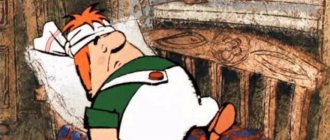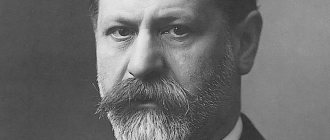The Salvation Clinic provides treatment for mental illness using effective psychotherapeutic techniques and gentle pharmacotherapy. Our institution has created favorable conditions for caring for hopelessly ill patients, restoring mental balance, and understanding one’s own desires. Under the guidance of doctors, it will be possible to eliminate depressive moods, come to your senses, collect your thoughts, come to terms with the negative events that have happened in life, overcome stress, find yourself and faith in a bright future. We help to establish relationships with ourselves and the world around us, and are courteous to the needs and interests of our patients.
History of mental illness
The history of mental illness and its treatment contains a huge number of both great achievements and simply terrible cases of the use of methods that do not cure people, but turn them into walking vegetables. Consider electroshock therapy, which was used to “treat” almost all mental illnesses. Naturally, this did not lead to anything good, but only created a terrible reputation for psychiatric clinics.
It is worth noting that over time, most of the barbaric methods of “healing” have fallen into oblivion. Some are still used now, but very selectively and only in extreme cases, such as electroshock therapy, lobotomy or isolation. Increasing attention is being paid to the handling and care of patients. Gradually, this changes the opinion about psychiatry from negative to neutral, and sometimes even to positive.
The first mention of mental illness dates back to the fifth millennium BC. For their treatment, craniotomy was used, which is confirmed by the corresponding images.
The culture of the ancient world believed that any mental illness was a consequence of the influence of supernatural forces. These included:
- evil eye;
- witchcraft;
- damage;
- demonic possession.
Most often, such diseases were treated in only one way - by making a hole in the skull, i.e. trepanation. It was believed that in this way evil spirits were able to get out of the human body through this hole, and the patient was completely cured of his illness.
However, some ancient cultures, such as the Persian and Egyptian, although they considered mental illnesses to be associated with the influence of evil forces, tried to cure them in completely different ways, such as:
- personal hygiene;
- participation in recreational activities;
- setting up for positive emotions.
The greatest progress in understanding mental disorders was made by the ancient Greeks, in particular Hippocrates. He was one of the first to discover that mental disorders are associated with natural phenomena in the human body. He immediately dismissed all superstitious prejudices and focused on the medical aspect of these phenomena. It was the Greeks who were the first to use bloodletting, phlebotomy and cleansing the body with the help of specially formulated diets.
Despite all this, most cultures still preferred to hide the presence of mentally ill people in the family. They were either locked at home or thrown out onto the street. If this person was considered violent or dangerous, then he was placed in prison or a dungeon, where he remained for the rest of his life.
Beginning in the 15th century, mentally ill people were placed in insane asylums, workhouses, and mental asylums. Is it worth talking about the terrible conditions in these institutions? Their staff had not received any training in dealing with people with mental health problems. Therefore, patients were subjected to violence and all kinds of humiliation, such as:
- restriction of freedom of movement;
- straitjackets;
- bloodletting;
- burning;
- enemas;
- dousing patients with ice or boiling water.
All this was done as part of shock therapy. In some institutions, the rooms where patients were kept were not even cleaned, and they were not allowed out. You can imagine the sanitary and hygienic conditions there.
The exception to all this were shelters that opened at religious institutions. There they were treated much softer and more attentively. A similar attitude towards the mentally ill was observed until the 19th century, when representatives of the “Humanitarian Movement” finally achieved the opening of a state psychiatric clinic. This radically changed the attitude towards patients. Over time, more effective methods of treating most psychiatric disorders have been developed, including the use of various medications, which are an order of magnitude more humane than previously used methods.
Classification of mental illnesses
- Organic mental disorders.
- Alcoholism, drug addiction, other types of addictions.
- Schizophrenia, paranoid delusions and other deviations associated with incorrect interpretation of reality.
- Mood disorders.
- Phobias, obsessive thoughts, anxiety and other types of disorders that affect a person’s physical health.
- Behavioral disorders.
- Mental personality disorders.
- Oligophrenia and other types of mental retardation.
- Mental development disorders.
- Disorders of behavior and emotional expression in minors.
- Unspecified mental problems.
Psychotherapeutic assistance
An essential component of treatment is psychological counseling. Regular meetings with a psychologist are aimed at helping the patient understand his illness and its causes, learn to get out of stressful conditions, overcome emotional problems, manage his thoughts and actions, and control behavior.
A course of psychotherapy usually lasts several months or more, and is prescribed individually, in a group of patients or relatives.
Nervous and mental illnesses
The risks of a nervous breakdown and other mental disorder due to the crazy pace of modern life are very high. A person is surrounded by constant stress at work, at home, and in public places. Negativity is brought about by a poor financial situation, poor ecology, and poor living conditions. At risk:
- people with a pronounced feeling of anxiety;
- workaholics with chronic fatigue;
- people with stressful jobs or family problems;
- persons prone to alcoholism, drug addiction;
- individuals with low self-esteem;
- people with a high degree of personal responsibility;
- persons with relatives with mental disabilities;
- persons with cancer pathologies, thyroid diseases;
- people who have had infectious diseases or head injuries;
- people whose lives have changed radically;
- breeding, young parents, careerists.
Vitamin therapy
They tried to treat schizophrenia with high doses of vitamins, for example, C or B vitamins, but the effectiveness of such therapy remained low.
For example, at one time the treatment of sluggish schizophrenia with riboflavin in combination with ascorbic acid and reduced iron was proposed by M.P. Bazarova and M.Ya. Sereisky (1954). Such therapy, according to the authors, contributed to an increase in the activity of neuroglia, which, in turn, affects metabolic and reduction (oxidation) processes in the central nervous system.
Mental illnesses
Currently, there are a large number of different mental disorders. Some occur very rarely, while others occur regularly. Among the second, the most common are the following:
- Depression. This is perhaps the most common disorder in the world. More than three hundred million people suffer from depression. Moreover, women are more susceptible to it. It is characterized by depressed mood, low self-esteem, poor concentration, loss of the ability to receive positive emotions, sleep disturbances and the formation of feelings of guilt. In its mild form, this disorder interferes with full-fledged work and life, and in severe form it can even lead to suicide.
- Bipolar effective disorder. Its characteristic feature is the alternation of normal life with depressive and manic manifestations. During manic episodes, the person becomes overly agitated and aggressive. He begins to talk a lot and becomes overly active. His self-esteem is too high and his need for sleep decreases.
- Schizophrenia. It is expressed in a distorted perception of reality, one’s own personality, as well as in a distortion of behavior, speech and emotions. This is often accompanied by the appearance of hallucinations and delusions. Typically, people with these disorders are unable to work or study. Develops primarily in early adulthood or late adolescence. With proper care and treatment, effective treatment and even life in a modern society is quite possible.
Neurohumoral therapy
In the forties of the twentieth century, it was believed that in the process of treating schizophrenia it is important to determine whether reactivity—cerebral or somatic (humoral)—plays a decisive role in the pathogenesis of this disease. It was assumed that in schizophrenia there is a certain parallelism between a decrease in cerebral reactivity and anergy of the humoral system, but the question of which of these processes was primary remained open. Some researchers believed that the specificity of the core of schizophrenia is caused by a decrease in the level of cerebral reactivity (Zalmanzon A.N., 1945).
They tried to treat schizophrenia by influencing skin receptors, based on the physiological role of the skin in the mechanisms of immunity and the occurrence of allergic reactions. Doctors had no doubt about the close connection of the skin with the nervous system, the role of nervous trophism in the process of neurohumoral interaction, and the cerebral mechanism of physiotherapeutic procedures. The use of skin irritations in the treatment of schizophrenia was led by studies concerning remissions during the disease in subcutaneous and skin inflammatory processes, as well as attempts to treat schizophrenia with turpentine abscesses (Zalmanzon A.N., 1945).
M.Ya. Sereisky emphasized the cerebral effect of active treatment methods and their effect on brain metabolism. Some authors have suggested that in many cases, changes in cerebral metabolism are a secondary result of the shock blocking effect on the central nervous system.
A.S. Kronfeld, in his doctrine of “anatax,” stated the unity of active methods of treating schizophrenia, based on the activation of nonspecific immunity. At the same time, changes in the whole organism were associated with cerebral processes, as if “dissolving in a single circle of biological changes.” It has been suggested that the biological restructuring of the body in schizophrenia is manifested in a “vital shift with a change in the sensorimotor set” - the basis of complex psychopathological changes. This whole process A.S. Kronfeld called “anatax,” which, in his opinion, was a fatally moving process of circular motion without a main link and driving force.
Partially, hyperbaric oxygenation can be attributed to therapy that affects metabolic processes and the reactivity of the body. The positive effects of hyperbaric oxygenation in schizophrenia were noted by N.M. Zharikov et al. (1981).
Mental illnesses of people
Modern medicine and psychiatry completely exclude the use of barbaric methods of treating the mentally ill. If it is not possible to completely exclude the disorder and symptoms, proper care and observation is provided. Treatment primarily consists of psychotherapy. Applicable:
- cognitive-behavioural approach;
- Gestalt psychotherapy;
- family therapy;
- support groups;
- group and individual trainings;
- hypnosis treatment;
- hardware methods of healing;
- physiotherapy.
Drug treatment is carried out mainly using antidepressants. However, it cannot be long-term due to the risk of developing addiction. It is used to quickly eliminate symptoms in the early stages of treatment of mental disorders.
Main directions of psychotherapy
Depending on the clinical picture and cause of mental disorders, doctors at our medical center practice the following psychotherapy techniques:
- dynamic, aimed at resolving conflicts, identifying unconscious drives;
- cognitive-behavioral, necessary for social adaptation, pathological characteristics of the patient’s behavior, identifying negative attitudes and overcoming them with the help of auto-training and relaxation;
- existential-humanistic, the purpose of which is to search for the meaning of life, problems of freedom of choice and dependence on the opinions of other people;
- art therapy, when the patient’s internal experiences are expressed non-verbally (using a drawing or any other creative product);
- suggestive treatment (various methods of hypnosis), used for addiction to alcohol, drugs, nicotine, etc., encopresis, enuresis and some other diseases.
In addition to psychotherapy and drug treatment of mental disorders, medical doctors use a variety of physical procedures and methods of hardware influence on biologically active points. Correction of the daily routine and diet is important, physical activity is beneficial. But the main principle of therapy is an individual approach to each patient.
To make an appointment or call a doctor at home, call us at +7 (495) 367-23-13.
Mental illnesses list
The Salvation Clinic provides anonymous psychotherapeutic assistance at home and in a hospital setting. We undertake to help even the hopeless. Highly qualified doctors will do everything possible to improve the patient’s mental and physical health, eliminate negative attitudes, and socialize. We undertake treatment:
- pedophilia;
- schizophrenia;
- monomania;
- neurasthenia;
- depression;
- oligophrenia;
- psychosis;
- obsessive thoughts;
- phobias;
- autism;
- personality disorders.
The clinic has created all the necessary conditions for productive treatment and a comfortable life. Accommodation in separate rooms with all amenities, installation of a personal nursing station is possible. Particular attention is paid to organizing meals for patients and leisure activities. Walking in the fresh air is mandatory every day. The center is located in a forested area. In half of the cases, the fundamental factors of treatment are fresh air, a change of environment, and a measured pace of life. The patient calms down, collects his thoughts, and comes to his senses. Contact us, we offer a real solution to the problem with anxious thoughts and other mental ailments!
Pyrotherapy
At one time, the use of pyrotherapy was recommended for the treatment of resistant variants of schizophrenia and the presence of psychopathic symptoms. T.A. Nevzorov and L.G. Ursova (1972) in resistant cases of sluggish schizophrenia advised adding pyrotherapy to psychopharmacological agents. The effectiveness of adding pyrogenal and sulfozine to neuroleptics, especially in the treatment of obsessive states, was justified by a change in the level of reactivity of the patient’s body under the influence of drugs that increase temperature.








